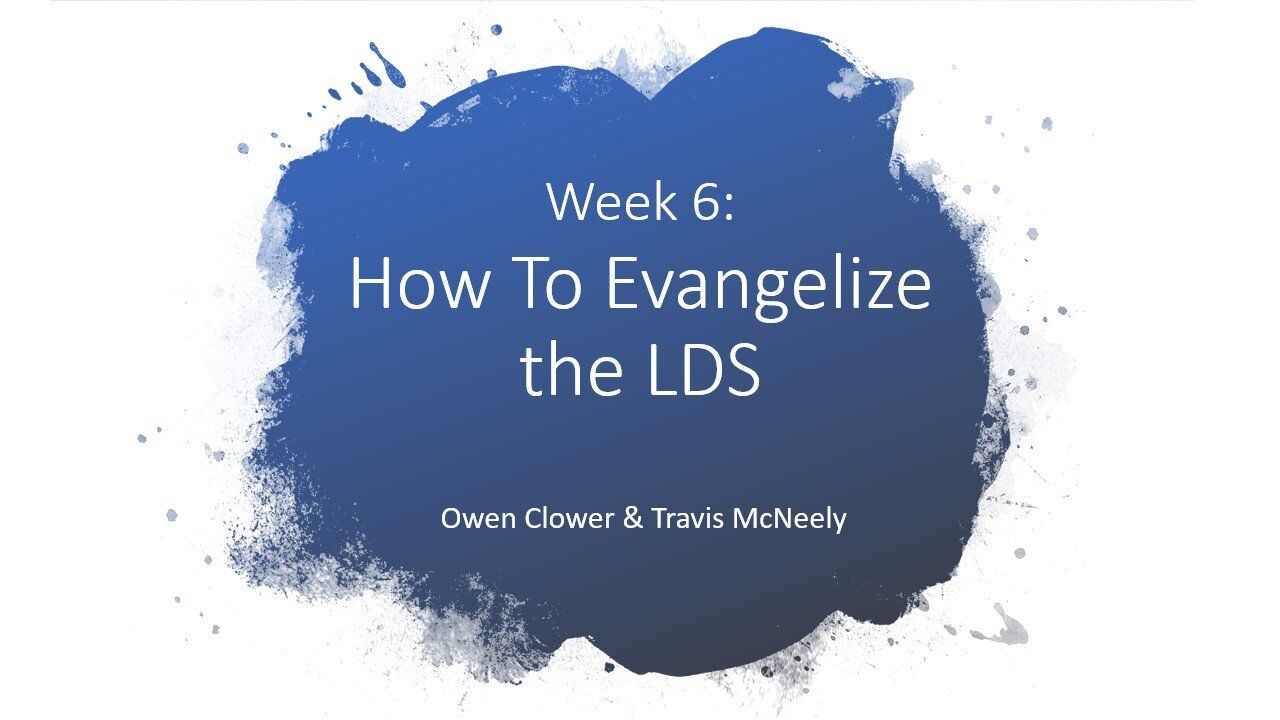What Were They Teaching? Examining the Colossian Heresy: Part 2

Editors Note: This post is in a series of 4 posts from a paper I did in my graduate studies. See Part 1 here . This is part 2! It is the second blog focusing specifically on the Colossians Heresy. The others will focus on exegesis of specific passages in Colossians.
The Colossian heresy has been a highly debated subject with apparently 44 different identifications of what this heresy might be.[5] Following Ian K. Smith’s overview of scholarship on this subject, there are four primary views to be examined here and concluding remarks will reveal what is most likely, though not with absolute certainty.[6]Preceding remarks are in order before delving into this discussion. It is a mystery to this day concerning what exactly this heresy was because Paul never states it clearly and therefore all are left to wonder and adduce the possibilities. The only clues available today are the words used by Paul and the remnants of history surrounding that first-century world in which it was written. Lightfoot: Essene Judaism and Gnosticism The first view to be examined is Lightfoot’s view, which is Essene Judaism of a Gnostic kind.[7] When he wrote his commentary and argued for the Essene Jews, his work was the most comprehensive of the Essene Jews until the discovery of the Dead Sea Scrolls in the 1960’s. Many connections were made and this affirmed of Lightfoot’s view when the Dead Sea Scrolls were discovered because more about the Essene’s came to light. The phraseology of the Qumran is very similar to the phrases found in this Colossians text, which shows a greater association may be possible between the Essene/Gnostic Jews.[8]Another strength is the repeated references in the Qumran material, where members repeatedly gave thanks to God for revealing to them his “wonderful mysteries,” was further evidence of this knowledge only known by a select few in the community.[9] The Essene’s had many similarities and associations with the Qumran, so their materials were very helpful for Lightfoot when discovered.Concerning Lightfoot’s weaknesses in this view, the first would have to be the lack of any reference by the heretics to insist that the Colossian believers undergo ceremonial washings, which was somewhat important for the Essene’s and very important to the Qumran community.[10]The missing regulation of ceremonial washings makes a strong enough case to say that this view does fall apart, for the most part. The second major weakness would be the location of Colossae and the non-typical location of the Qumran. This community was known to be in a different environment than the Phrygian area of Asia Minor, particularly the location of the Dead Sea.[11]This is enough evidence to say it is very likely that they were not primarily a Qumran community, although Qumran ideas could have had an influence if it was syncretistic, it was nonetheless not solely Qumran ideas. If anything it could have been an offshoot of the Qumran community that abandons some of its core teachings, but that is simply supposition. The possible Qumran connections will be discussed further in the section on Judaism below. Dibelius: Hellenism The second view to be examined, broadly labeled by Ian Smith as Hellenism, which happened to be very influential was that of Dibelius, who held specifically to a Gnostic/Pre-Gnostic mystery cult.[12] He rejected the notion that it had Jewish characteristics to it, by stating that the Sabbath had been given a new meaning through this philosophy of Colossae.[13] He built this all around the evidence of one word that was similar, which he found at an archaeological site: the temple of Apollo at Claros.[14] This word, ἐμβατεὺω used in 2:18, was “used to describe initiates entering the sanctuary so as to consult the oracle on completion of a rite.”[15] This is used by Dibelius as strong evidence that just as at Claros the word referred to initiation rites, thus it is proof of initiation rites in the Colossian heresy.The initiation rites put only a select few have access to these heavenly visions, and greater knowledge of the mysteries of God, which does have very similar Gnostic notions in it. Some see this as a great strength, the specific phrase correlation, but many see this claim as a weakness rather than strength. Primarily because the type of worship setting it was: it was an oracle sanctuary in Claros, whereas this deception was taking place in the Colossian church.[16] Dibelius believed that Christians would join in this without explicitly abandoning their faith, it seems that they believed it would enhance their faith by entering into these initiation rites.[17]The weaknesses conveyed are that the word does not really contain the technical nuance that Dibelius says it does. As Pate points out, Fred O. Francis argues that it is a word, “especially in Judaism, [that] meant to enter the Promised Land (Josh 19:49, 51 [LXX]; cf. Col 1:12-13).”[18] Pate holds to the interpretation of the phrases “worship of angels” and “things seen upon entering” to give weight to the merkabah mysticism view, which will be covered further below.[19] This is contrary to Dibelius’ view and holds stronger weight than his because Pate has a better grasp of the meaning of ἐμβατεὺω than him. Precisely because he uses other facets of the Colossian text, which Dibelius relies too much on archaeological studies of a different nature, i.e., a temple in contrast to the Colossian church body. There are simply far too many questions left unanswered in Dibelius’ view, but it should not be ignored completely because it is an honest attempt to search out the meaning of one part of the text. If Dibelius could be encouraged to rely more on the text on his research he possibly would have come to a different conclusion.Arnold: Paganism—Judaism and Phrygian Folk-ReligionWhat Arnold calls the “folk religion” of the Phrygian region is what might best cohere (although loosely) the construction of the Colossian “philosophy,” which he believes is very general and not specific.[20] There may be cultic overtones concerning the practice and it could also be seen as something privately practiced amongst those in that region, but examining the phrases in Colossians does not tell us specifically the setting of the expression of these practices.[21] Arnold has a thorough introduction to the use of magic in Asia Minor, which sets the backdrop for understanding further the veneration of angels.[22]Knowing Paul’s primary intention in writing to the Colossians is to oppose this philosophy, it is essential to understand (for interpretive purposes) what is meant by the “worship of angels.”[23] Understanding that phrase is the most specific clue to the nature of the philosophy according to Arnold.[24] He argues against the wide acceptance of F. O. Francis’ conclusion concerning the grammar of this phrase to be a subjective genitive rather than an objective genitive. He believes that this falls apart on grammatical grounds, in regards to Francis’ take on the genitive expression τῶν ὰγγέλων and does not account for the ‘philosophy’ in its totality.[25] People are not drawn to worship with the angels according to the subjective genitive view, rather angels are (according to the objective genitive) the object of worship by the adherents of the philosophy. This makes sense concerning the region this philosophy is in and its history of usage within works written around that region. The primary sources used to argued against Francis are incredibly revealing and strongly support Arnold’s claims.[26]Arnold claims to construct his view on the foundation of A. L. Williams, who held to a syncretistic Judaism, with a sympathy for a type of Lightfoot’s Essensim, but where they differ is that Williams betrays the influence of the magical character notable specifically by the Phrygian, Persian and Syrian influences.[27] Arnold finds agreement with the heart of his thesis that, “The ‘worship of angels’ in Colossians 2:18 refers essentially to a magical invocation of angels, especially for apotropaic purposes.”[28] Arnold seems to make Williams’ view stronger by consulting the history of the magic around the Phrygian area, rather than simply relying on the Jewish understanding and use of magic. Arnold cites a long quote by P. S. Alexander, which not only gives the reader a warrant but also a mandate to investigate further the implications of popular religion in a region to understand the teaching of the Colossian philosophy. [29]According to studies of the veneration of angels in the context of magic: they were called upon as deities or in place of them, given commands to assist human petitioner’s, angels were understood in relation to the stars and thus Arnold later argues the connection with this and the στοιχεῖα τοῦ κόσμου “elements of the world.”[30] Arnold also agrees with interpretation of the term ἐμβατεὺω as outlined by Dibelius.[31] These three terms are the outline of Arnold’s view and for the sake of time I will not delve into the depth he gives. It is important to note where this interpreter relies on his Phrygian folk-religion view.Much of what Arnold says cannot sufficiently be covered here; it is all very helpful in regards to bringing more evidence to the discussion on the Colossian heresy and its relation to the Phrygian folk-religion. Some weaknesses of Arnold are pointed out by Ian Smith, who states that his thesis “is more reliant on background material than on careful exegesis of the text of Colossians.”[32] For instance, Smith states that he never directly addresses why the text does not address things in the background material such as: “magic, amulets, spells, and charms.”[33] He also associates the wisdom with magic, when the wisdom in the text seems to associate with behavior (1:9-14; 3:16; 4:5).[34] Responding to Smith and defending Arnold, it could be that the magic mentioned in the background material was utilized out of a behavior motive.For instance, Arnold mentions how magic was used for personal gain in love relationships or vengeance against enemies.[35] So there was a behavioral aspect to Arnold’s view of magic, but there was also as Smith rightly notes a revelatory magical use that had to do with heavenly visions.[36] As a side note when the text seems to refer primarily to behavior instead of magic a piece of evidence for that would be the word examined previously κρινέτω, which is an imperative verb expressed as a general command and typically used in ethical or moral situations by Paul.[37] This is evidence for a more accurate view of defining wisdom than what was taken up by Arnold in relating it to magic.This interpretation of the Colossian heresy is very helpful even with the weaknesses within because it does take into account the local religious experiences of the pagan people. This is very important for studying the historical context and will aid any student of Colossians to better understand the world before, during, and after the writing of Colossians, but as Smith points out Arnold needed greater exegesis of the text.[38] Bruce – Judaism This view will seem very similar to the view mentioned previously by Lightfoot, but his view was a syncretism of Essene Judaism and Gnosticism, whereas Merkabah mysticism, which found influence in the Qumran community, was strictly a Jewish mysticism. While there are significant signs that the heresy at Colossae could be Jewish like the correlation between Hosea 2:11 and Col. 2:18 with the “festivals, new moons, and a Sabbath.” There are some other aspects of studies of this heresy that bring out further Jewish influences, which could help to understand a possible interpretation of this heresy. The last view covered in this paper is the view of F. F. Bruce concerning Merkabah mysticism.Merkabah [chariot-throne] literature dated from approximately 150 B.C. to around 500 A.D. and thus predated the time of Paul and the Colossians.[39] This mysticism can be defined as “exercises designed to facilitate entry into the vision of the heavenly chariot (merkābāh), with God visibly enthroned above it.”[40] This is in connection of Ezekiel’s vision that was granted to him at the call of his ministry (Ezek. 1:15-26). What was essential for gaining such a vision was a rigorous obeying of every detail of the law.[41] Bruce cites the leading scholar on Merkabah mysticism, Gershom Scholem, to show comparisons to Gnosticism and Scholem goes as far to say that this mysticism could be described as a Jewish form of Gnosticism.[42] To Scholem the throne-world that the Merkabah mystic sought to enter into was to him:[W]hat the pleroma, the ‘fullness’, the bright sphere of divinity with its potencies, aeons, archons, and dominions is to the Hellenistic and early Christian mystics of the period who appear in the history of religion under the names of Gnostics and Hermetics.[43]Reasons for the possibility of this view being the Colossian heresy are the mention of heavenly ascent. Bruce admits that it cannot be proved that this heresy in Colossae was an early form of Merkabah mysticism, but nevertheless it is an interesting prospect. In view of these 4 views, this is the strongest view, but in agreement with Bruce, it cannot be proven completely. Other views have their strengths of contribution to speculation; especially Arnold’s thorough study of folk-religion was helpful in understanding history. It is very helpful to one’s understanding of historical context to study these things out and from it clues to what it might be may be given. But to grasp theologically what is happening in the epistle one does not need to have an exact grasp on what the heresy is to see clear theological teaching. To Be Continued......This post set the dove deep, the next covers a passage that centers on the gospel which will be foundational for the last post, which is the main passage that MAY reveal the Colossian Heresy. STAY TUNED. I release a blog every Wednesday at noon. Footnotes :[5]J. J. Gunther, St. Paul’s Opponents and Their Background. A Study of Apocalyptic and Jewish Sectarian Teachings. Novum Testamentum Supplement Series 35 (Leiden: Brill, 1973), 3-4.[6]Smith, Heavenly Perspective, 19-38.[7]J. B. Lightfoot, Saint Paul’s Epistle to the Colossians and to Philemon (London: Macmillan, 1912).[8]O’Brien, Colossians, xxxiv.[9]F. F. Bruce, The Epistles to the Colossians, to Philemon, and to the Ephesians (Grand Rapids, MI: William B. Eerdmans Publishing Company, 1984), 22.[10]O’Brien, Colossians, xxxiv.[11]Bruce, Colossians, 23.[12]Martin Dibelius, “The Isis Initiation in Apuleius and Related Initiatory Rites,” in F.O. Francis and W. A. Meeks, eds. Conflict at Colossae: A Problem in the Interpretation of Early Christianity Illustrated by Selected Modern Studies, (Missoula, MT: SBT and Scholar Press, 1975). 61-121.[13]Smith, Heavenly Perspective, 25.[14]Dibelius, “Isis Initiation,” in Francis and Meeks, Conflict, 89.[15]O’Brien, Colossians, xxxiv.[16]G. Bornkamm, “The Heresy of Colossians,” in F. O. Francis and W. A. Meeks eds. Conflict at Colossae: A Problem in the Interpretation of Early Christianity Illustrated by Selected Modern Studies, (Missoula, MT: SBT and Scholar Press, 1975), 130.[17]Marvin C Pate, Communities of the Last Days: The Dead Sea Scrolls, the New Testament & the Story of Israel (Downers Grove, IL: InterVarsity Press, 2005), 184. Also see, Francis, “Humility and Angelic Worship.” and his “The Background of Embateuein (Colossians 2:18) in Legal Papyri and Oracle Inscriptions,” in Conflict at Colossae, ed. F. O. Francis and W. A. Meeks, SBLMS 4 (Missoula, MT: Scholars Press, 1975), 197-208.[18]Ibid., 184.[19]Ibid., 185.[20]Arnold, Colossian Syncretism, 5.[21]Ibid., 95.[22]Ibid., 11-31.[23]Ibid., 6.[24]Ibid., 8.[25] Ibid., 9.[26]Many primary sources are cited and footnoted in Arnold, Colossian Syncretism, 92-97.[27]Ibid., 10.[28]Ibid., 10.[29]Ibid., 17.[30]Ibid., 30-1.[31]Ibid., 104-57.[32]Smith, Heavenly Perspective, 32.[33]Ibid., 32.[34]Ibid., 32.[35]Arnold, Colossian Syncretism, 26-30.[36]Smith, Heavenly Perspective, 31.[37]Campbell, Colossians: Handbook to Greek Text, xxvi, 42.[38]Smith, Heavenly Perspective, 32.[39]Pate, Last Days, 180.[40]Bruce, Colossians, 23.[41]Ibid., 23.[42]Ibid., 24.[43]G. G. Scholem, Major Trends in Jewish Mysticism (New York: Schoken Books Inc., 1974), 43.

Want To Book Me for Your Event or Conference?
Fill out the form below and we'll be in touch!
Book Travis McNeely
We will get back to you as soon as possible
Please try again later
More posts like this...




